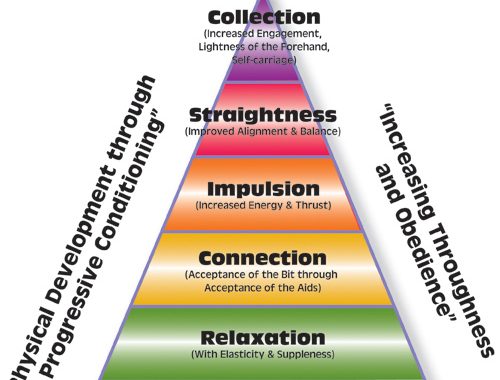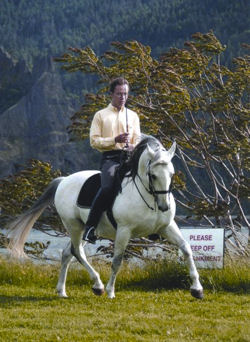Trot Variations
Trot Variations of Pace Defined
Pace refers to the variations of a gait. For example: Gait = Trot. Pace = Collected trot, Working trot, Medium trot or Extended trot. The length of the stride is what changes not the rhythm of the footfalls.
How to Execute the Trot Variations
Start in working trot – sitting or rising
As the horse moves onto the long side, half halt then apply leg pressure at the girth to move the horse into a slightly larger trot.
Half halt before the corner by closing the legs, seat and hands to encourage the horse to come back to a more collected pace.
Practice extension on the long side and collection on the short sides initially as this provides adequate time for the rider and horse to prepare for the transition and subsequent pace.
To complete this exercise go back into working trot or perform a downward transition for a walk break.
Notes:
If performing the rising trot during the lengthening or extension phase, rise higher and stay up longer – do not increase your rising tempo. If the rising tempo is increased, it will encourage the horse to change his tempo as well.
The half halt prior to extending ensures that the horse is engaging his hindquarter, thus resulting in thrust.
Performing transitions within the gait are an excellent way to bring the horse’s mind into his work.
Purpose of the Trot Variations
To increase engagement of the hind quarter.
To develop balance and musculature for self carriage.
To increase impulsion.
To ensure responsiveness to the rider’s aids.
Common Errors in Execution
The horse loses rhythm.
The horse falls on the forehand and becomes unbalanced in “moving on” phase.
The loses activeness of the hind quarter in the “collection” or “coming back” phase.
Author: Dressage Academy
Trot Lengthening
Trot Halt Transitions
You May Also Like

The Not-So-Secret, Secret Dressage Training Formula Article
December 31, 2017
Rejuvenate Your Dressage Horse
July 6, 2017